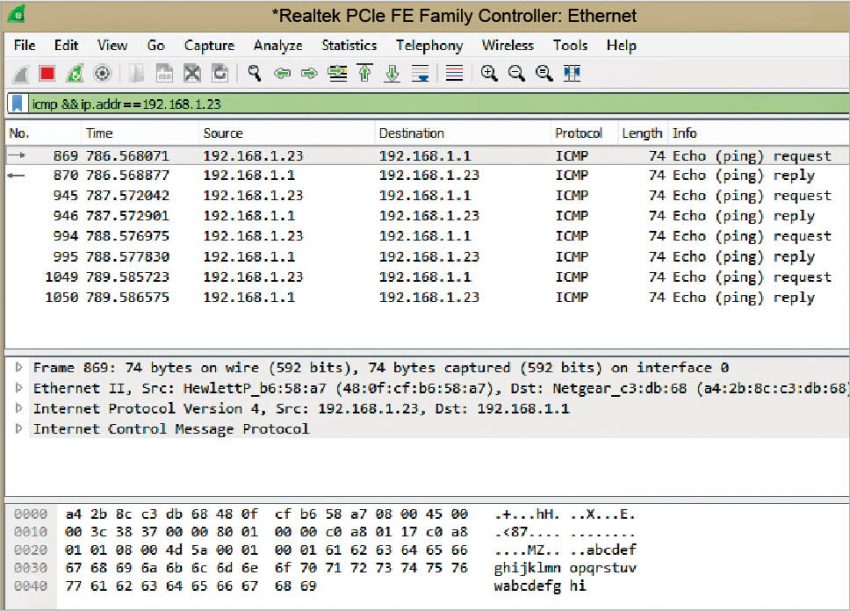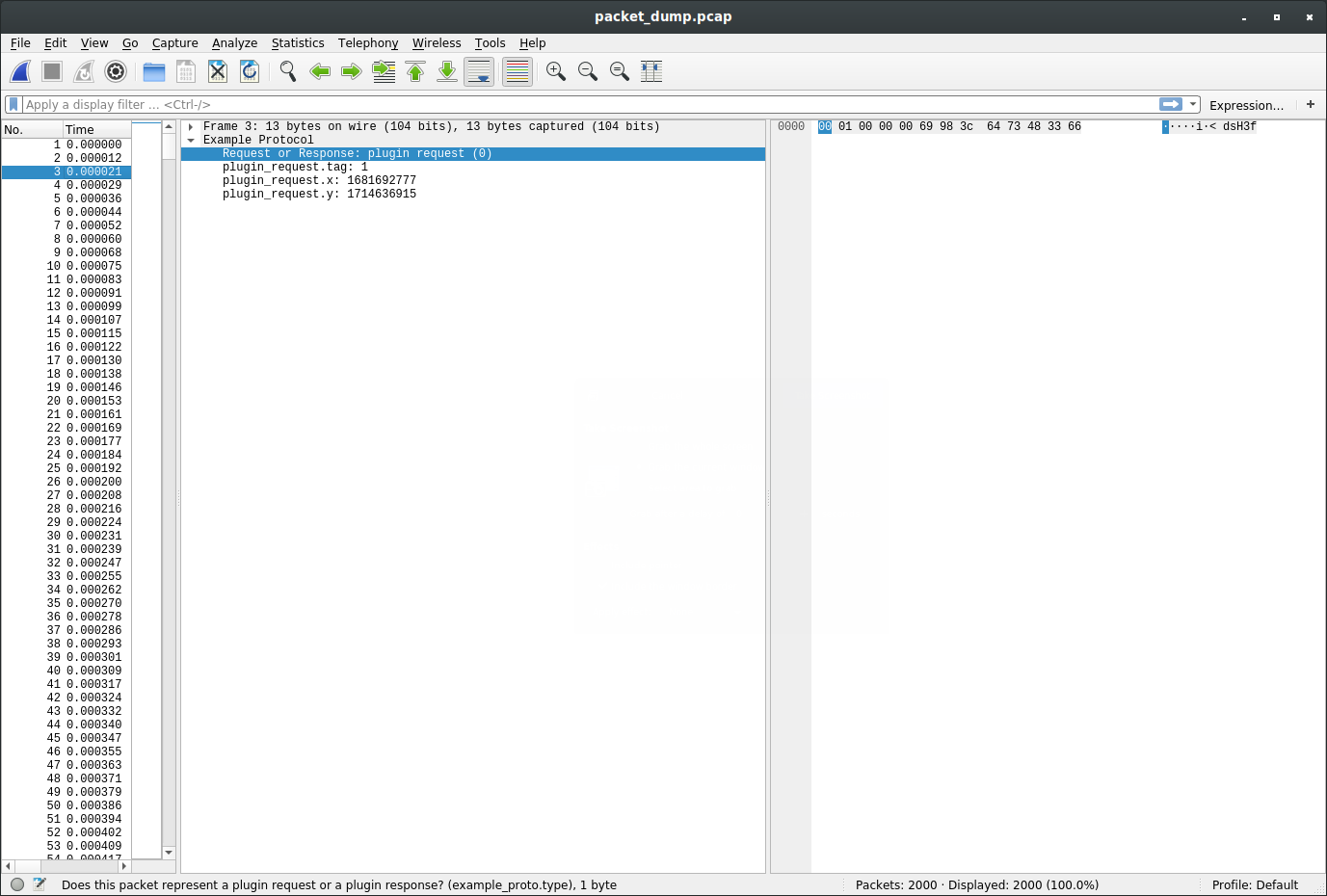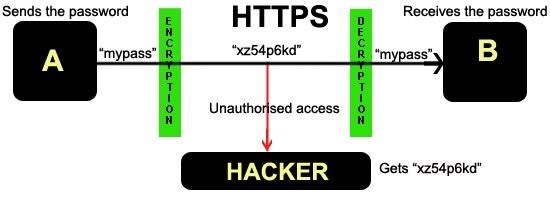

#WIRESHARK TUTORIAL TO VIEW DIFFERENT LAYER DATA BYTES CODE#
* Code Listing 5.1: Calculate a 16-bit checksum for use in UDP */ /* Calculates a 16-bit checksum */ uint16_t cksum ( uint16_t * bytes, size_t length ) Previous messages), that last byte is concatenated with zeroes to create a 16-bit value. Regarding the payload, if there are an odd number of bytes (as shown in the The checksum field is replaced with aġ6-bit value containing information about the protocol, which is defined in RFC 762 for UDP, thisġ6-bit value is 0x0011. The UDP pseudo-header contains the source port, destination port,Īnd the length fields of the regular UDP header. Payload, parts of the IP header (which we are ignoring here, as we have not examined IP yet), and a In UDP, the checksum is evaluated over the UDP segment, as shown in Code Listing 5.1. The checksum value is the result of repeated one’s complement addition of 16-bit values in the Request payload was 29 bytes, so the total length of the UDP segment was 37 bytes the response wasĥ3 bytes, due to the longer response in the payload. OpenDNS server, which was listening on port 53 ( 0x0035). In this example, the client had opened ephemeral port 5000 ( 0x1388) and sent the request to the

UDP provides fast but unreliable transport, while TCP features reliable One key feature for choosing a transport layer protocol is whether or not theĪpplication is requesting a reliable transport service that attempts to correct failures As a less extreme example, the message might not actually be lost, but it may encounterĪ delay in the network that causes it to arrive too late. Unplugging it there is no possible way for your laptop to communicate with another machine that is As an example, consider the effect of someone tripping over the cord of a server and These components causes failed attempts at a significantly higher rate than an OS would everĮncounter. For a variety of reasons, the distributed nature of In contrast to a monolithic entity like an OS, the network is a layered architecture of distributedĬomponents that cooperate to exchange data. Web server on the remote host, while returning the web page to your web browser process. The transport layer ensures that your request gets delivered to the process running the That other host, not just the machine in general you would probably be surprised if your webīrowser suddenly began showing you binary DHCP or DNS responses instead of HTML-formatted When you use a web browser toĪccess you are intending to communicate with a particular process running on Virtual end-to-end communication channel between processes. Specifically, the transport layer establishes the logical structure of a The transport layer provides the first level of abstraction that application-layer Implemented in hardware, including network interface cards, cables between devices, and radios. Protocols (including TCP and IP) are typically implemented within the OS. There is truth to this conflation, as some layers and OS with the network as the service provider. That is,Īpplication-layer network programming can be easily conflated with other forms of IPC, replacing the In either regard, the communication is specific to that application, and there is anĪssumption that “the network”-a mysterious, almost magical entity-transmits the data.


Other applications, such asĭNS or DHCP, exchange highly structured binary messages that are intended to be interpreted by peer Communication at that level can followĪ protocol that defines human-readable message formats, such as HTTP. IPC for exchanging data between processes on different hosts. Up to this point, we have used application-layer socket programming essentially as another form of


 0 kommentar(er)
0 kommentar(er)
